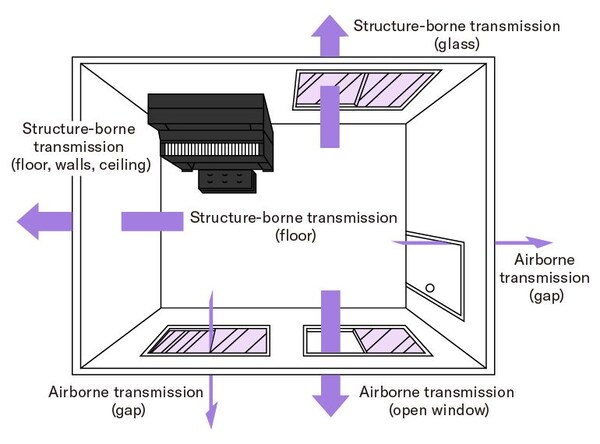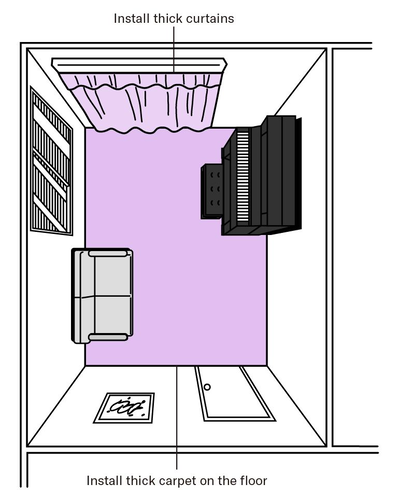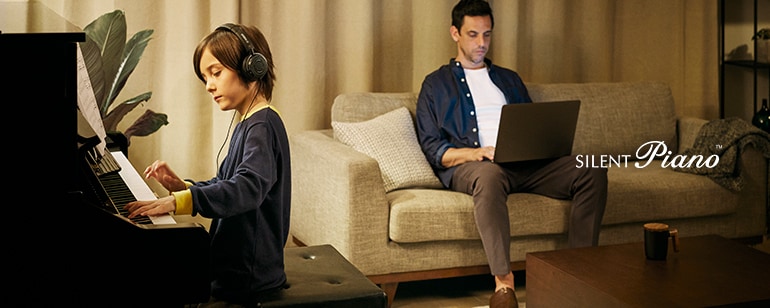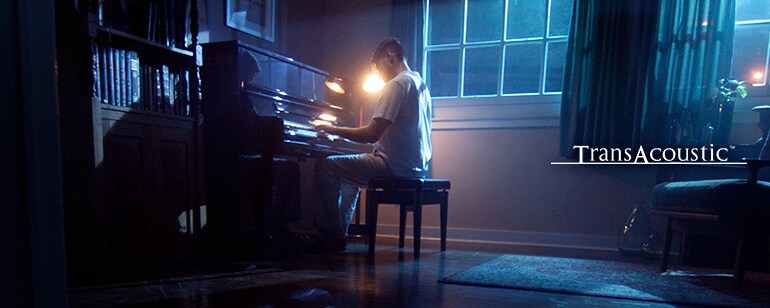Tips for Soundproofing
Consideration for sound
We are surrounded by an enormous variety of sounds in our everyday lives. How we hear these sounds is dramatically affected by the surroundings and by the state of the listener. Understanding the way that sound is transmitted to the surrounding area is the first step to enjoying beautiful piano sound.
How sound is transmitted

Categorizing sound by how it is transmitted
There are two ways that sound is transmitted.
Airborne sound: Sound that spreads from the piano through the air, passing through gaps in doors and open windows, etc.
Structure-borne sound: Vibrations that are transmitted from the piano through its casters to the floor and walls, and then radiated as sound
Taking your neighbors into consideration, it is important to be careful of airborne sound in well-ventilated houses, and of structure-borne sound in collective housing such as apartments and condominiums, which are highly sealed.
Upright pianos transmit sound to the rear, while grand pianos transmit it upwards and downwards
Different piano types exhibit different characteristics in the ways that sound is transmitted.
・ Upright pianos are notable for the loud volume of the sound transmitted to the air and walls from their rear surface.
・ Grand pianos are characteristically loud in the upward and downward directions.
Sound transmission from an upright piano
Sound transmission from a grand piano
Specific tips for soundproofing and sound insulation
Install your piano
・ In a location that is not in direct contact with an exterior wall
・ As far away as possible, taking neighbors into consideration
Specific hints and tips

・ Close windows and storm shutters
・ Use heavy or double-layered curtains
・ Use a sound muffling mechanism
・ Attach a sound insulating board to the rear of an upright piano, or to the underside of a grand piano
・ Install thick carpeting on the floor
・ Seal gaps in windows and doors
Suggestions from Yamaha
SILENT Piano TM and TransAcoustic TM Piano
These unique products from Yamaha utilize a combination of digital and acoustic technologies that offer you the enjoyment of an acoustic piano without having to worry about the sound. Please refer to the product pages below for details.
Guia do instrumento musical: Índice do piano
Origens
Estrutura
Como tocar
Como os instrumentos são feitos
Escolhendo um instrumento
Cuidado e manutenção
Trivialidades
- As teclas brancas e pretas foram invertidas nos pianos no dia de Mozart
- O piano de Mozart tinha um pedal?
- Piano com sistema de acompanhamento automático no dia de Beethoven
- Os pianos adorados pelo grande mestre Sviatoslav Richter
- O material ótimo para as estruturas do piano é também ideal para motores de motocicletas
- A mesa de som do piano é uma mesa que também interrompe as vibrações
- Por que não pode haver mais de 88 teclas em um piano?
- Por que o teclado do piano de cauda parece mais pesado do que o teclado do piano vertical?




